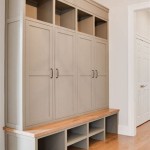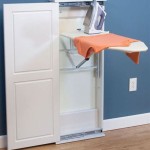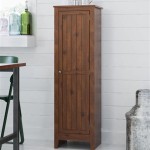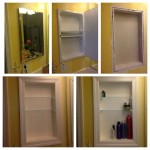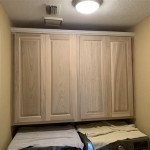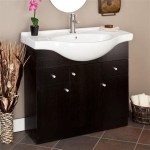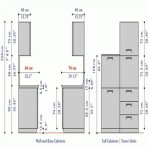Should You Prime Kitchen Cabinets Before Painting?
Painting kitchen cabinets is a common and effective way to refresh the look of a kitchen without undergoing a full-scale renovation. A key decision in this process is whether or not to prime the cabinets before applying the topcoat. Priming adds an extra step to the project, and some may be tempted to skip it to save time and effort. However, the decision to prime can significantly impact the final outcome in terms of adhesion, durability, and the overall aesthetic appeal of the painted cabinets. This article explores the reasons why priming is generally recommended and examines the circumstances where it might be optional, providing a comprehensive guide to help homeowners make an informed decision.
The primary function of primer is to create a suitable base for paint. Paint adheres better to a properly primed surface, resulting in a more durable and long-lasting finish. Without primer, the paint may peel, chip, or scratch more easily, requiring more frequent touch-ups and potentially leading to a premature need for repainting. Furthermore, certain cabinet materials, such as laminate or glossy surfaces, are inherently difficult for paint to adhere to directly. Primer acts as a bonding agent, creating a strong connection between the cabinet surface and the paint.
Enhancing Paint Adhesion
One of the most critical benefits of using primer is its ability to enhance paint adhesion. Kitchen cabinets are often made of materials that are not naturally porous or receptive to paint. Melamine, laminate, and previously painted surfaces can be particularly challenging. Primer provides a porous surface for the paint to grip onto, significantly improving its ability to bond to the underlying material. This enhanced adhesion translates to a more durable finish that is less susceptible to wear and tear, extending the lifespan of the paint job.
Different primers are formulated for specific purposes. For instance, some primers are designed specifically for bonding to slick surfaces like laminate. These primers contain adhesive properties that create a strong connection, ensuring that the paint adheres properly. Conversely, using paint directly on these surfaces can result in poor adhesion, causing the paint to peel or flake off over time, especially in high-traffic areas or environments prone to moisture and temperature fluctuations, such as kitchens.
The degree to which primer enhances adhesion depends on the type of primer used and the condition of the existing cabinet surface. Cleaning and sanding the cabinets are crucial steps in preparing the surface for priming, and a good quality primer will further improve the bonding process. Using a primer specifically designed for the cabinet material and the type of paint chosen will yield the best results in terms of adhesion and longevity of the paint job.
Blocking Stains and Preventing Bleed-Through
Another vital function of primer is its ability to block stains and prevent bleed-through. Kitchen cabinets are often exposed to various substances, including grease, food splatters, and water stains, which can penetrate the wood or other materials. If these stains are not properly sealed before painting, they can bleed through the new paint, discoloring the finish and compromising the aesthetic appeal of the cabinets. Primer acts as a barrier, preventing these stains from migrating to the surface and ensuring a uniform and unblemished paint job.
Similarly, some woods, such as cherry or mahogany, contain tannins that can leach out and discolor lighter-colored paints. This phenomenon, known as tannin bleed, can be particularly problematic when painting cabinets white or other pale hues. Primer formulated to block stains and tannins effectively seals the wood, preventing these substances from bleeding through and preserving the integrity of the paint color.
The effectiveness of primer in blocking stains depends on its formulation and the severity of the stains. For heavily stained cabinets, multiple coats of primer may be necessary to ensure complete coverage and prevent bleed-through. Choosing a high-quality stain-blocking primer designed for the specific type of stains present is essential for achieving optimal results. Proper preparation of the cabinets, including cleaning and sanding to remove any loose debris or contaminants, will also contribute to the primer's ability to effectively block stains and prevent bleed-through.
Creating a Uniform Surface for Paint
Primer also helps create a uniform surface for paint, ensuring a consistent and professional-looking finish. Cabinets may have variations in texture, color, or porosity, which can affect how the paint is absorbed and appears on the surface. Primer evens out these inconsistencies, providing a smooth and uniform base for the paint. This results in a more consistent color and sheen, enhancing the overall aesthetic appeal of the cabinets.
For example, if some areas of the cabinets have been previously repaired or patched, the surface may be uneven or have different textures. Primer fills in minor imperfections and creates a smooth surface that the paint can adhere to evenly. This prevents the paint from highlighting these imperfections and ensures a uniform and professional-looking finish.
The type of primer used can also affect the uniformity of the surface. Some primers are formulated to fill in minor cracks and imperfections, while others are designed to provide a smooth and even base for paint. Choosing the appropriate primer for the specific needs of the cabinets will help create a uniform surface that enhances the overall appearance of the paint job. Additionally, sanding the primer lightly after it dries can further smooth the surface and ensure optimal paint adhesion and uniformity.
While the advantages of priming are numerous, there are situations where priming might not be strictly necessary. These situations are relatively rare and depend heavily on the condition and material of the cabinets, as well as the type of paint being used.
If the cabinets are already in excellent condition, with a smooth, clean surface and no existing stains or imperfections, and if the new paint is a high-quality, self-priming paint specifically designed for cabinets, then priming may be skipped. However, it's crucial to understand that even in these cases, priming provides an added layer of insurance against potential adhesion problems or bleed-through issues.
Another scenario where priming might be considered optional is when repainting cabinets with a similar color and sheen, and the existing paint is in good condition. In this situation, a light sanding and cleaning may be sufficient to prepare the surface for the new coat of paint. However, it's still advisable to test the paint adhesion in an inconspicuous area before proceeding with the entire project to ensure that the new paint will bond properly to the existing finish. If any adhesion issues are detected, priming is highly recommended.
Ultimately, the decision of whether or not to prime kitchen cabinets before painting depends on a variety of factors, including the cabinet material, the condition of the existing finish, the type of paint being used, and the desired outcome. While priming adds an extra step to the project, the benefits in terms of adhesion, durability, stain blocking, and surface uniformity often outweigh the added effort. In most cases, priming is recommended to ensure a long-lasting and professional-looking paint job that enhances the appearance of the kitchen cabinets for years to come.
Neglecting to prime can lead to a range of problems, including peeling paint, uneven color, and visible stains. These issues can compromise the aesthetic appeal of the cabinets and necessitate costly repairs or repainting. By investing the time and effort to prime the cabinets properly, homeowners can avoid these potential pitfalls and achieve a superior and more durable finish.
Before beginning the painting process, it is imperative to thoroughly clean the cabinets. This involves removing any grease, dirt, or grime that may be present on the surface. Using a degreasing cleaner specifically designed for kitchen cabinets is recommended. After cleaning, rinse the cabinets with clean water and allow them to dry completely before proceeding to the next step.
Sanding the cabinets is another crucial step in preparing them for primer and paint. Sanding roughens the surface, creating better adhesion for the primer and paint. Use a fine-grit sandpaper (e.g., 220-grit) to lightly sand the cabinets, paying particular attention to any glossy or smooth areas. After sanding, remove any sanding dust with a tack cloth or vacuum cleaner.
Applying the primer evenly is essential for achieving a smooth and uniform finish. Use a high-quality brush or roller to apply the primer in thin, even coats. Avoid applying too much primer at once, as this can lead to drips, runs, and uneven coverage. Allow the primer to dry completely according to the manufacturer's instructions before applying the paint.
Selecting the correct primer and paint is crucial for achieving a durable and long-lasting finish. Choose a primer that is specifically designed for the type of cabinets being painted (e.g., wood, laminate, metal). Similarly, select a high-quality paint that is formulated for kitchen cabinets. Consider factors such as durability, cleanability, and resistance to moisture and stains when choosing the paint.
Painting kitchen cabinets is a worthwhile project that can significantly enhance the appearance of a kitchen. By carefully considering the need for primer and following the proper preparation and application techniques, homeowners can achieve professional-looking results that will last for years to come. The decision to prime should be based on a thorough assessment of the cabinet material, condition, and the desired outcome, prioritizing quality and longevity for a satisfying renovation.

How To Paint Kitchen Cabinets A Step By Guide Confessions Of Serial Do It Yourselfer

What You Need To Know Before Painting Cabinets The Palette Muse

Refinish Kitchen Cabinets With Kilz Restoration Primer

A Year In Review Of How I Painted My Laminate Cabinets With Two Methods

How To Prime Cabinets For A Smooth Finish The Turquoise Home

How To Clean Prep Wood Kitchen Cabinets Before Painting Do Dodson Designs

Painting Kitchen Cabinets Without Primer

How To Paint Kitchen Cabinets A Step By Guide Confessions Of Serial Do It Yourselfer

How To Paint Kitchen Cabinets Without Sanding Or Priming

Avoid These Mistakes How To Paint Cabinets That Are Already Painted Grace In My Space
Related Posts

